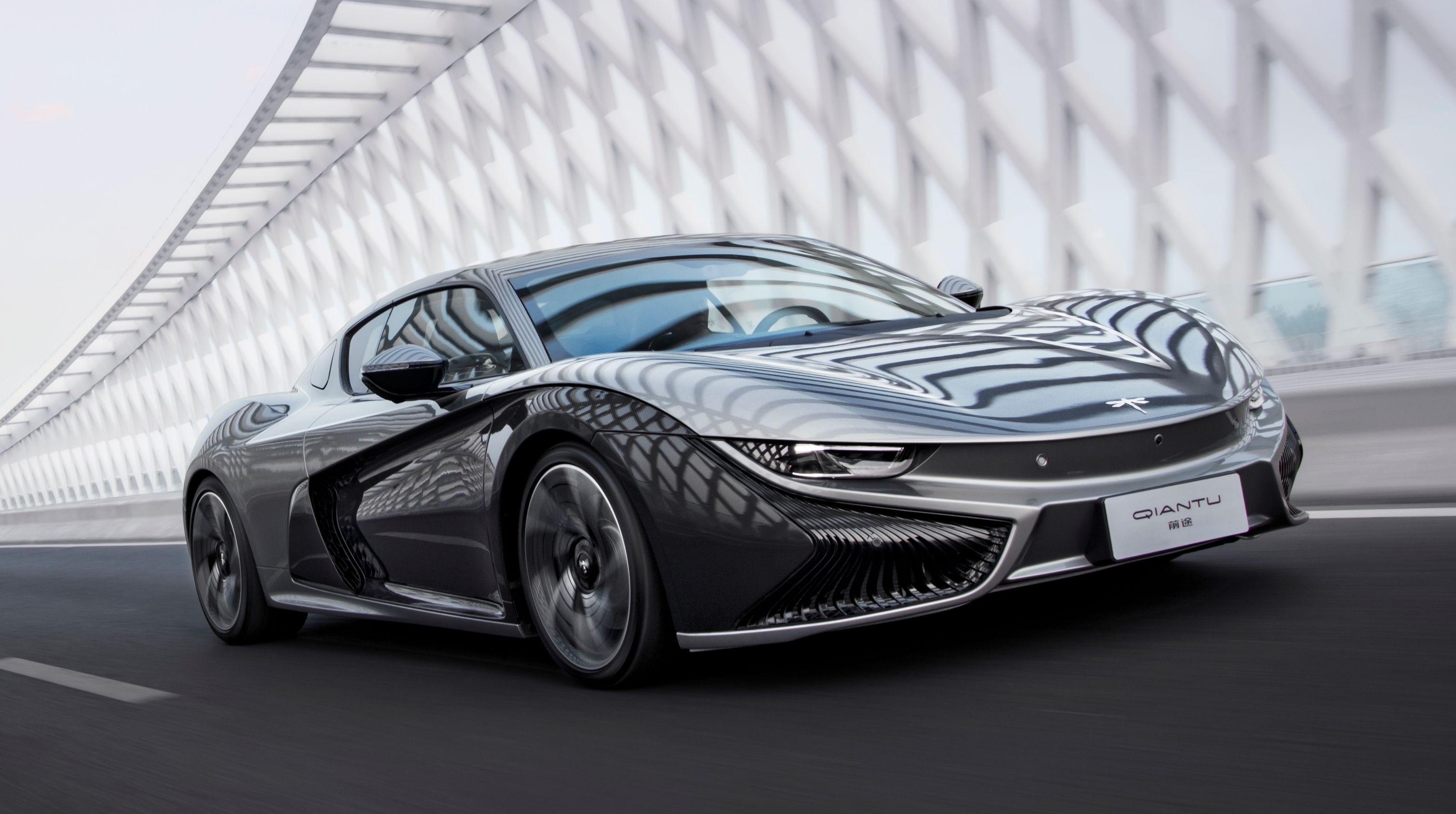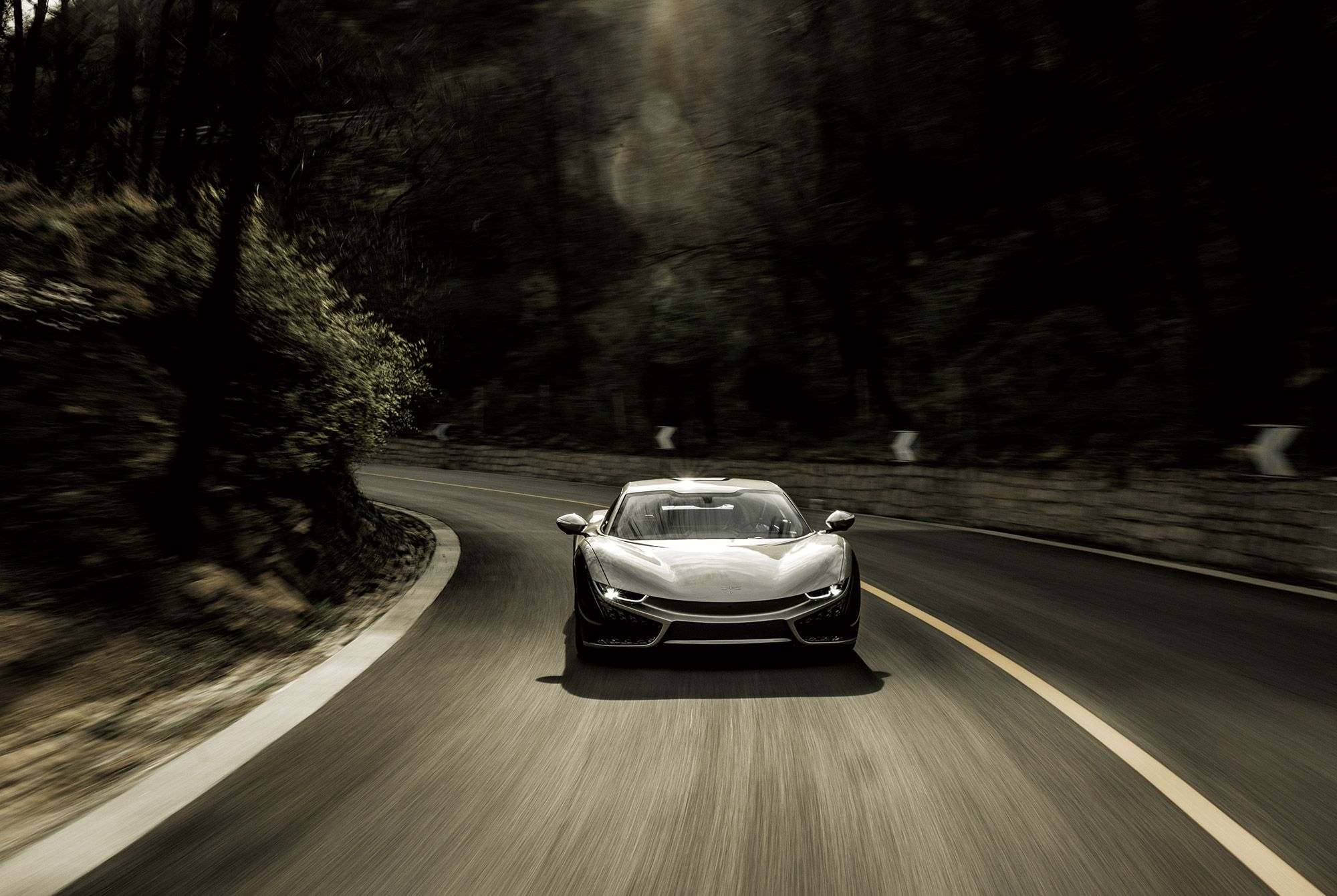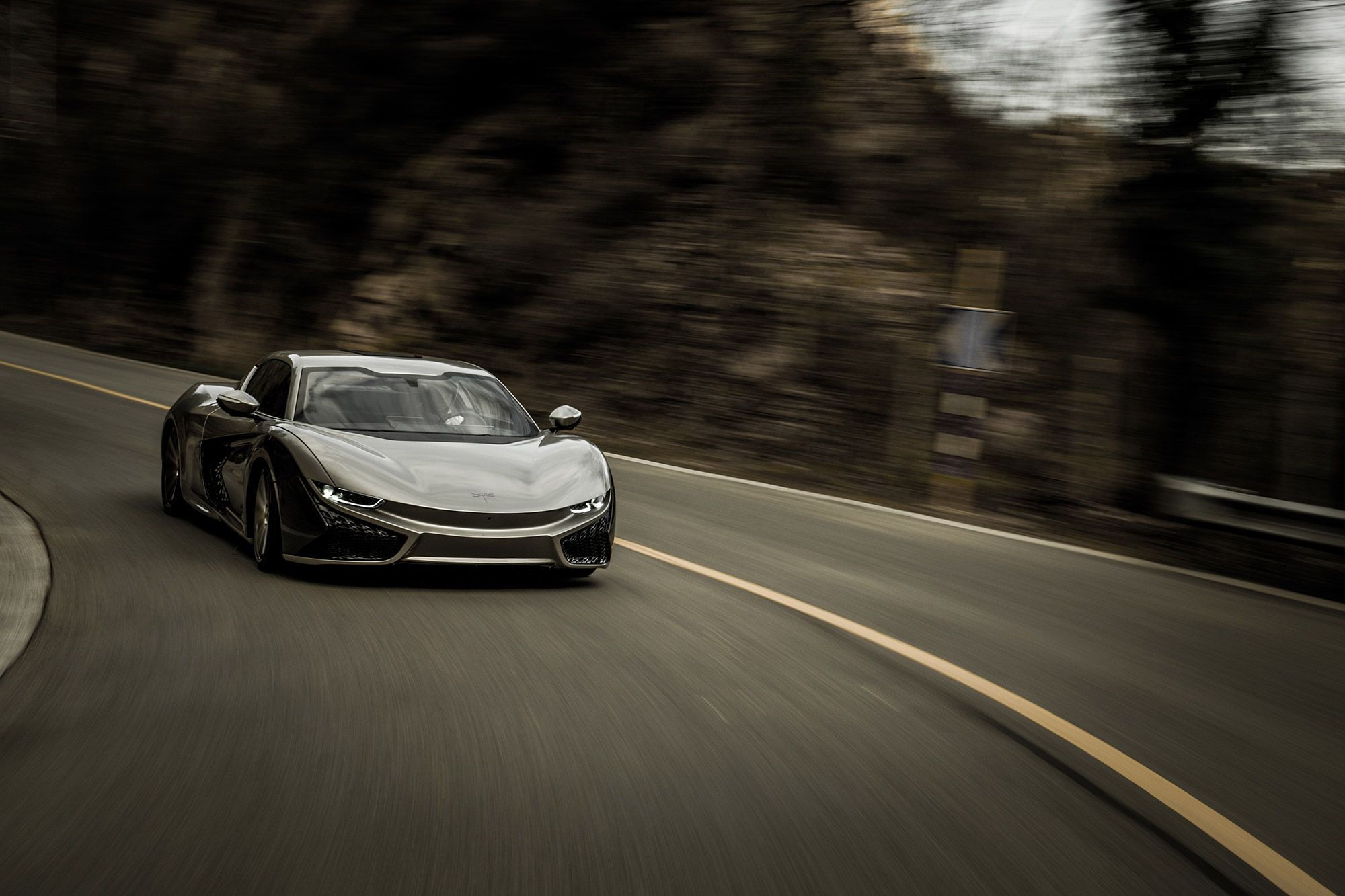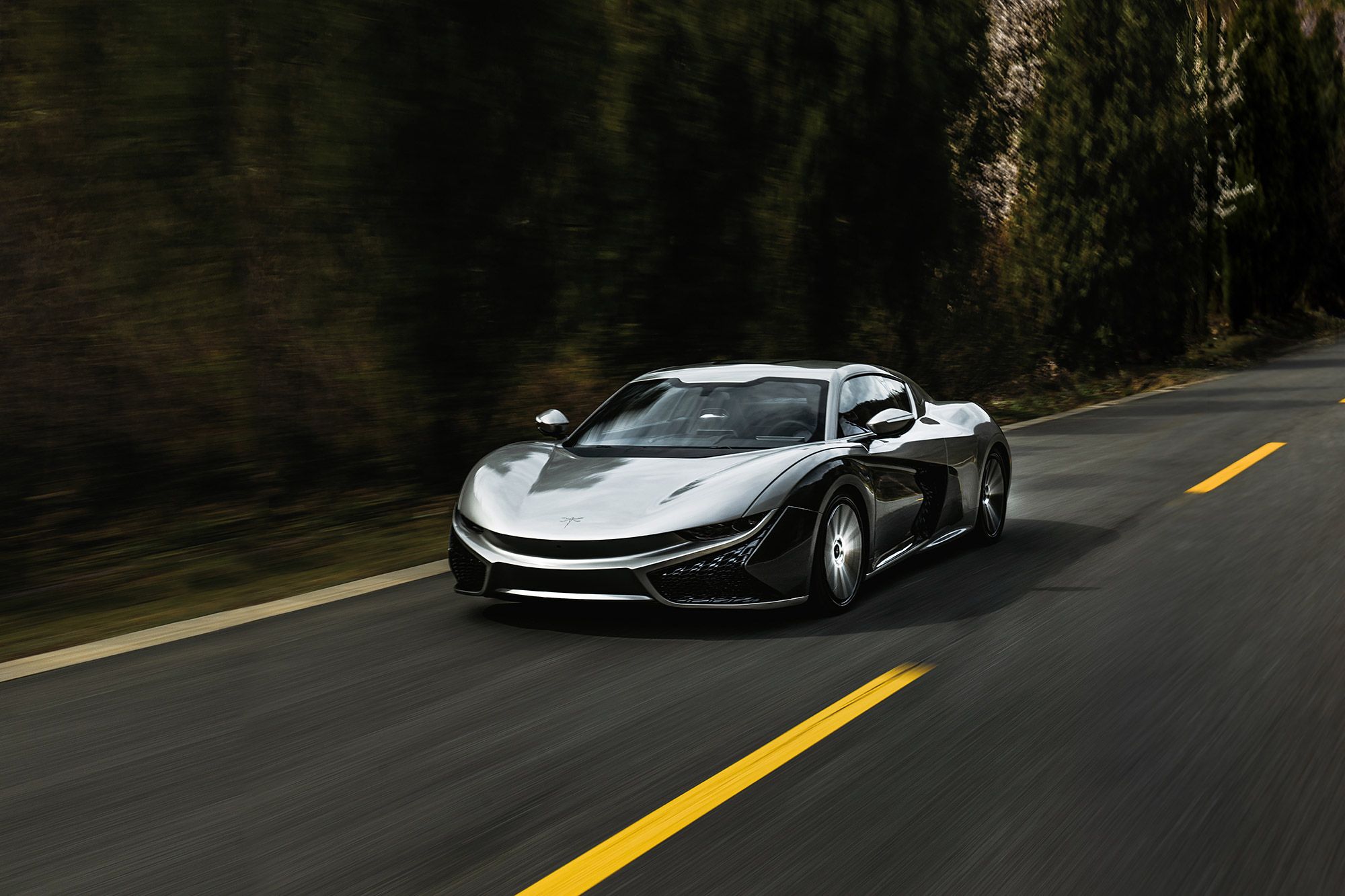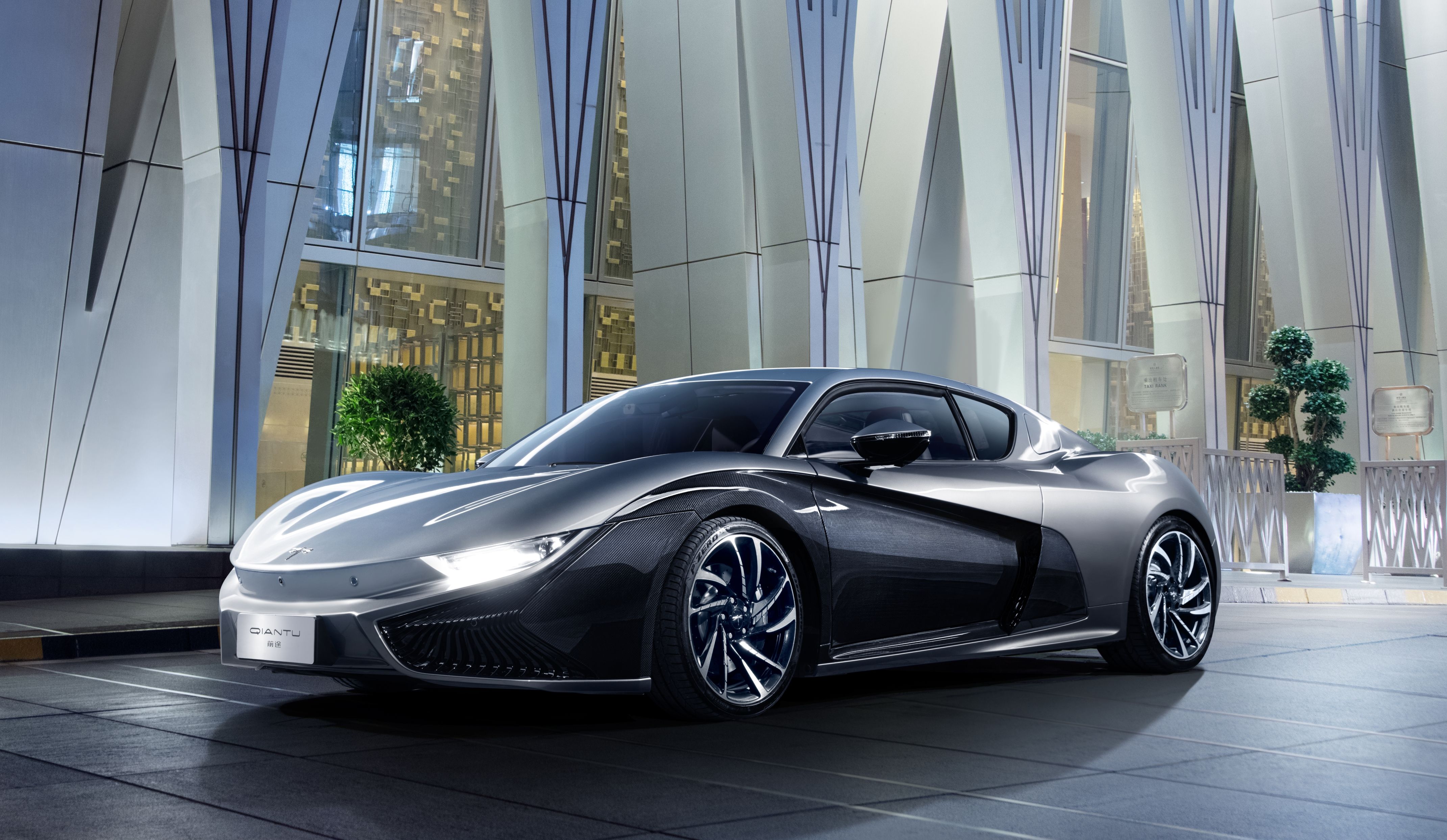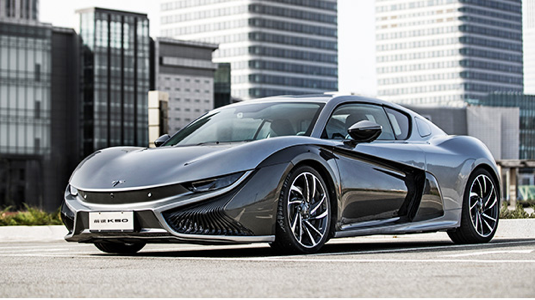The Qiantu K50 electric two-seater will make its North American debut at the New York Auto Show in just over a month's time. The model, first introduced back in 2015 as the K50 Event! at the Shanghai Auto Show, will be sold Stateside by Mullen Technologies, the company that will actually assemble the cars as well.
The Qiantu K50 has 375 horsepower and 428 pound-foot of torque and rides on an aluminum frame with carbon fiber body panels. It features two electric motors, one connected to each axle, and, depending on the driving mode you choose, all the power can be sent to the rear wheels or can be spread across the two axles for an AWD experience. Top speed is electronically limited to 124 mph, and the sprint from 0 to 62 mph takes a claimed 4.6 seconds. The two companies say the car will be "unexpectedly affordable," as we reported back in December. Let's see what has changed since then.
The 2020 Qiantu K50 Looks the Part, but That Means it's Only Halfway There
The Chinese market is, arguably, the place to go if you want to sell your latest crossover SUV. It's also a place that becomes more and more welcoming towards EVs and, as the demand for automobiles is on the rise, local manufacturers try to keep themselves ahead of foreign imports. This is also the case in the sports car market.
Of course, it's no NIO EP9, China's benchmark EV supercar, but it doesn't try to pass as one either. After all, the NIO hides a 777-volt powertrain that's capable of offering up to 1,341 horsepower combined from all four electric motors, one behind each wheel. The NIO also has four gearboxes that have to handle a combined 1,092 pound-feet of torque. By comparison, the Qiantu only has 375 horsepower and 428 pound-feet of torque and half the number of electric motors.
As mentioned, the Qiantu first broke cover four years ago in native China. Based on the CH Auto Event concept, the K50 Event! was said to put out about 394 horsepower and 480 pound-feet of torque that translated to a 0 to 62 mph time of five seconds flat while the battery pack was big enough to last you 124 miles on a charge. In 2016, a roadster version was unveiled at the Beijing Auto Show which, like the coupe, featured a two-tone body paint.
Qiantu's first plans to export the K50 to the U.S. were laid out that same year with the company's Chairman telling South China Morning Post that "we attach great importance to the U.S. because of its size, and it is also an open market where we can see opportunities for our car," as quoted by Motor1. 2016 was also the year when the first prototypes started testing on the open road in China. Almost two years later, the car was finally available to buy in its native country, Qiantu owning a plant in Suzhou that's capable of manufacturing 50,000 units annually - but probably not of a specialized sports car such as this one. In any case, when launched, the K50 was advertised for the equivalent of $109,396 before government subsidies were applied.
Mullen is, at first, a weird choice for a company like Qiantu who's looking to expand with the help of a solid partner. That's because the American's company's only claim to fame is as the producer of the gruesomely dated-looking 2015 Mullen 700E. It looks like a Chinese knock-off because, really, it is. To be pedantic, it's actually a compact sedan underpinned by the same chassis as the fifth-generation Mirage-based Mitsubishi Lancer produced between 1995 and 2003.
Apparently, that was enough for Qiantu to reason that Mullen is the company it should turn to. This looks more like an opportunity for the American company to clean up its act after trying to pass that generic vehicle as a new and unique model when they showed up at the 2014 Los Angeles Auto Show. I mean the K50 is miles ahead at least in the looks departments - many, many, many miles ahead.
Talking about appearance, the K50's front fascia, mainly, saw some modifications between 2015 and the present day. For instance, it received brand-new teardrop-shaped headlights that sit within a crease in the front fascia that makes the Chinese car resemble a BMW i8. The two grilles on either side of the bumper are different too, the mesh itself bulging forwards as it follows the curvature of the front overhang.
It looks bolder than before, which isn't a small feat considering the automaker first showcased it with a sizeable "GT" kit installed that comprised an extended splitter, black side skirts, and a big diffuser in the back to work in tandem with the fixed wing on the engine lid. Now, the K50 lacks all that aerodynamic paraphernalia, and this helps it look more legitimate.
In the rear, a flowing strip of light that wraps around itself at both ends of the rear fascia is also reminiscent of the BMW i8 but not in a way that would make you feel like you're looking at a copy-cat. No, the Qiantu is different enough to live as its own thing with the partially darkened rear lid that features a ducktail spoiler and a clear glass above.
Daniel Darancou, Qiantu's Chief of Design, talked to CleanTechnica about the trends in Chinese automotive design. "The key feeling or key characteristic of Chinese design DNA is referred to as 'The C Factor,' he said. "There is an emerging tide of surface and graphic treatments and proportions that are showing the way towards this look." He argues that the Chinese manufacturers have progressed in leaps and bounds over the past few years to catch up to the established Western manufacturers and he goes as far as stating that "in each segment and price range, there is very little measurable advantage ."
According to the most recent press release we've got, you'll be able to purchase the K50 as early as next year in a choice of "six standard colors with multiple color design options for the buyer to choose from."
Talking about rivaling products, the first one that springs to mind is the first-generation Tesla Roadster. Produced between 2008 and 2012, it was the first sporty EV to hit the market, and that's why many people were so quick to criticize it. We've seen, since '08, how far Tesla has come in the space of just a decade. Granted, the technology also evolved at an accelerated pace, but other EV manufacturers lagged behind.
To illustrate my point, here are the specs of the 2012 Tesla Roadster Sport: 288 horsepower (up by 40 horsepower from the standard version) and 295 pound-feet of torque, 95 over the original.
So, there you have it, a 2012 EV capable of keeping up, as far as range goes, with what should be a 2020 model year car that pretends to be quite modern. At the end of the day, sales will depend on the price. It will probably dive into triple figures as it does in China, but at least it won't have to compete with the 2020 Tesla Roadster as that should cost over $200,000 and offer a 0 to 60 mph time of 1.9 seconds, a +250 mph top speed, and 7,376 pound-feet of torque. Still, at over $100,000, the Qiantu is more expensive than the upcoming Porsche Taycan that is said to start at just $75,000 while the Tesla Model S range is in that region as well and both of those offer two extra doors, more oomph and a bigger battery pack for longer journeys.
Further reading
Read our full review on the 2007 Tesla Roadster
Read our full review on the 2020 Tesla Roadster
Read our full review on the 2019 Nio EP9.

